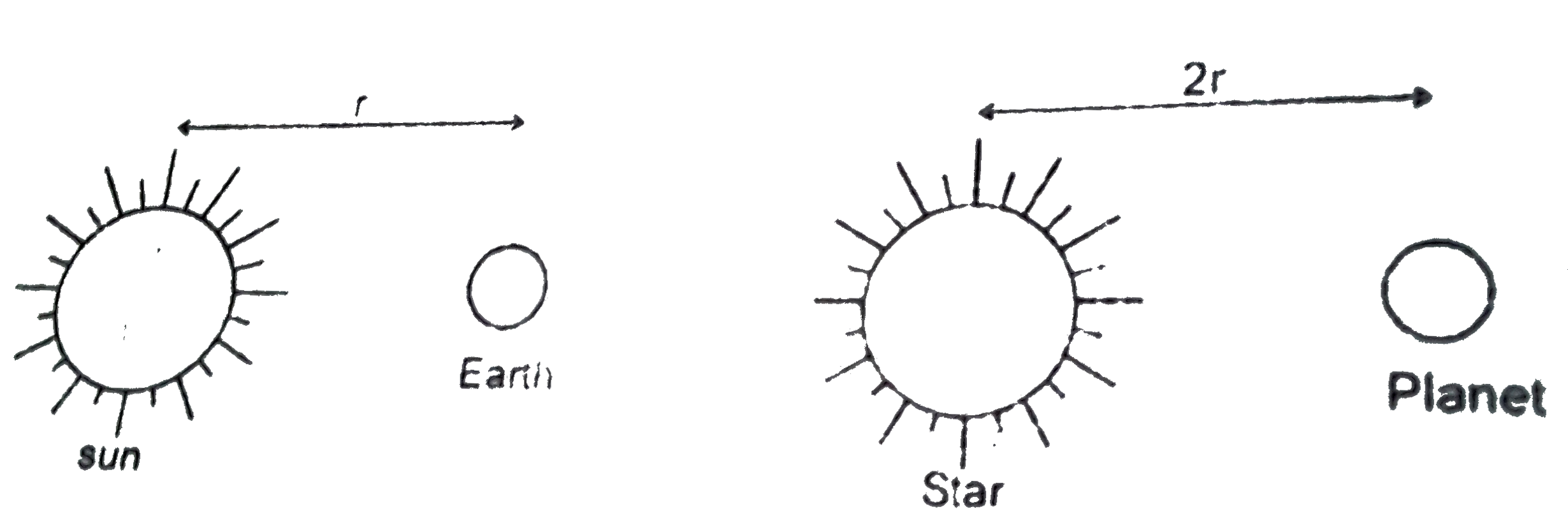When the observations are taken at an interval of 6 months, the angle of parallax for a star is 0.4''. Find the distance of star in par sec.
The correct Answer is:5.02 par sec
Here, for observations at an interval of six
months, I = diameter of earth's orbit
=2×1.5×1011m
=3×1011m
θ=0.4''=0.460×60×π180rad
distance of star, r= ?
From I=rθ
r=Iθ=3×1011×60×60×1800.4×π
=1.547×1017m
As 1 par sec=3.08×1016m
∴r=1.547×10173.08×1016 par sec = 5.02 par sec
Topper's Solved these Questions
- PHYSICAL WORLD AND MEASUREMENTBOOK - PRADEEPCHAPTER - PHYSICAL WORLD AND MEASUREMENTEXERCISE - Test Your Grip
50 Videos
- PHYSICAL WORLD AND MEASUREMENTBOOK - PRADEEPCHAPTER - PHYSICAL WORLD AND MEASUREMENTEXERCISE - Fill in the blanks
50 Videos
- PHYSICAL WORLD AND MEASUREMENTBOOK - PRADEEPCHAPTER - PHYSICAL WORLD AND MEASUREMENTEXERCISE - Value Based Questions
5 Videos
- OSCILLATIONS AND WAVESBOOK - PRADEEPCHAPTER - OSCILLATIONS AND WAVESEXERCISE - multiple choice Questions
13 Videos
- PROPERTIES OF BULK MATTERBOOK - PRADEEPCHAPTER - PROPERTIES OF BULK MATTEREXERCISE - Multiple choice questions
7 Videos
Similar Questions
The moon is observed from two diametrically extremes A and B on earth. The angle of parallax is found to be 1∘54'. If the diameter of the earth is about 1.276×107 m, estimate the distance of the moon from the earth.
View SolutionA distant star is observed from two diametrically opposite points on earth. If both the points are at distance 1.27×107m and angle subtended by both the points at star is 0.80'', calculate the distance between earth and the star.
View Solution
Knowledge Check
The parallax method has been used for measuring distances of stars, which are
Alass then 100 light years awayBmore the 100 light years awayCneither less nor more then 100 light years awayDnone of aboveIf light takes 5 yr to reach the Earth from a Star. Find the distance between that Star and the Earth in km.
A3×108B15×108C4.73×1013D9.3×1012If light takes 5 yr to reach the Earth from a Star. Find the distance between that Star and the Earth in km.
A3×108B15×108C4.73×1013D9.3×1012
Let a star be much brighter than our sun but its mass is same as that of sun If our earth has average lift span of man as 70years In the earth like planet of this star system having double the distance from our star find the average lift span of a man on this planet in terms of our year
 .
.
View SolutionA double star is a system of two starts moving around the centre of inertia of the system due to gravitation. Find the distance between the components of the double star, if its total mass equals M and the period of revolution T.
View SolutionThe small dense stars rotate about their common centre of mass as a binary system, each with a period of 1 year. One star has mass double than that of the other, while mass of the lighter star is one-third the mass of the Sun. The distance between the two stars is r and the distance of the earth from the Sun is R, find the relation between r and R.
View SolutionThe principle of 'parallax' in Art. 1(c ).4. is used in the determination of distacne of very distant stars. The baseline AB in the line joining the Earth's two locations six months apart in its orbit around the sun. That is, the baseline is about the diameter of the Earth 's orbit ≈3×1011m. However, even the nearest stars are so distnat thet with such a long baseline, they show parallax only of the order of 1''(second) of arc or so . A parsec is a convenient unit of length on the astronomical scale. It is the distance of an objhect that will shown a parallax of 1'' (second) of arc fome oppsoite ends of a beasline equal to the distance from the Earth to the sun. How much is a parsec in terms of metres ?
View SolutionA Planet is revolving around a star in an elliptic orbit. The ratio of the fathest distance to the closest distance of the planet from the star is 4. The ratio of kinetic energies of the planet at eh farthest to the closest position is
View Solution
